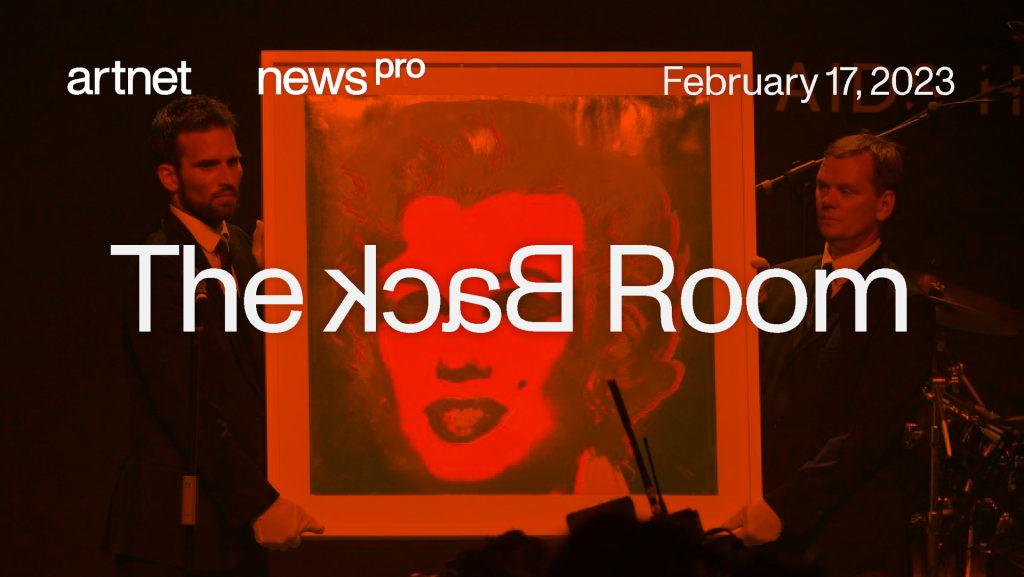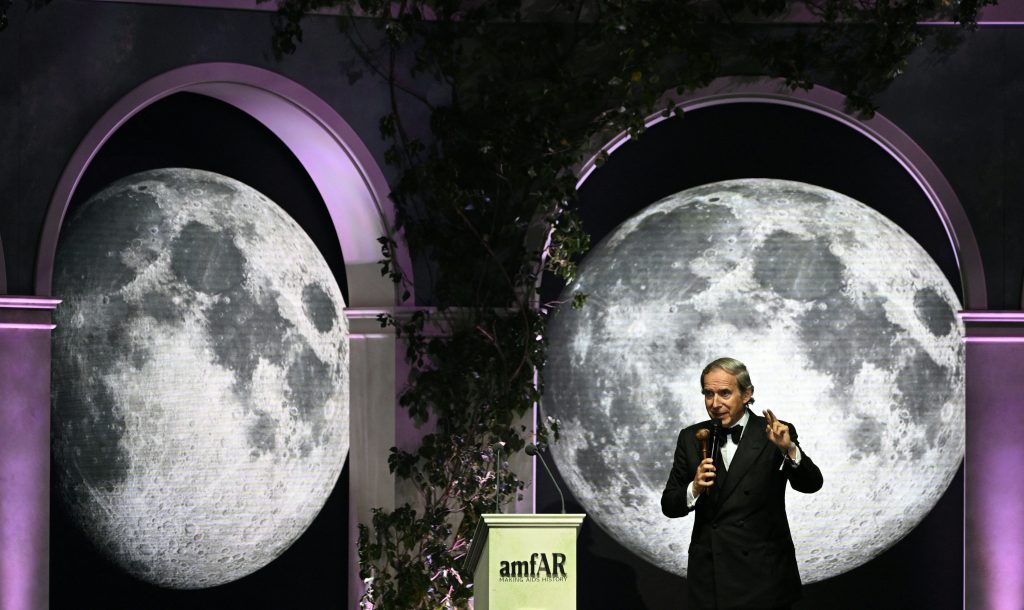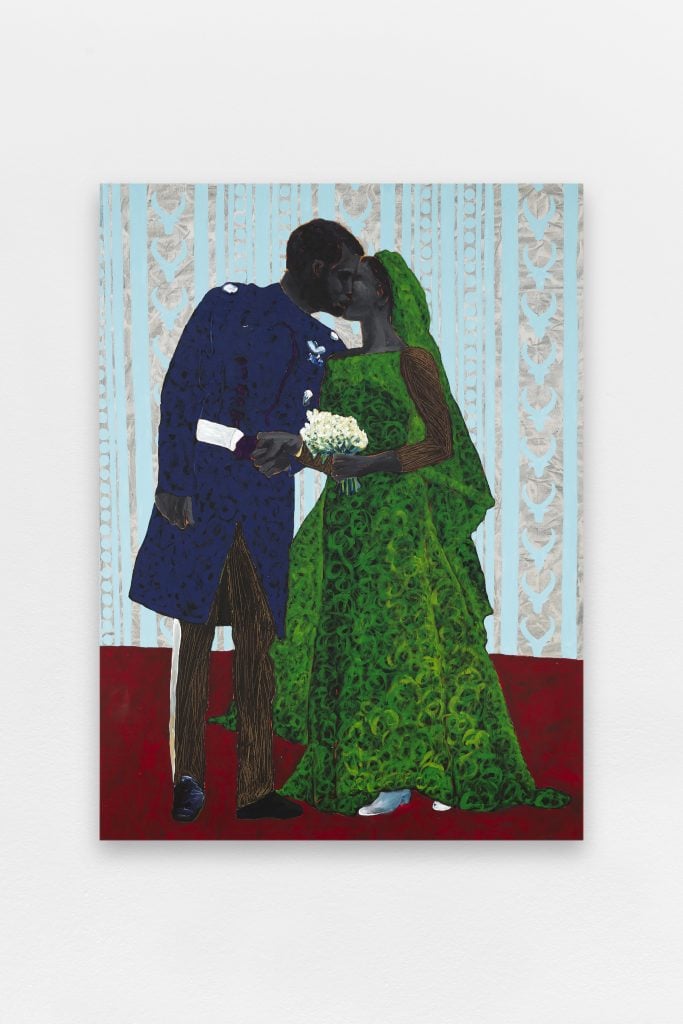The Back Room
The Back Room: Who Benefits, Exactly?
This week: the strange calculus of charity auctions, Adam Lindemann tries to make history (again), a Ugandan star on the rise, and much more.

This week: the strange calculus of charity auctions, Adam Lindemann tries to make history (again), a Ugandan star on the rise, and much more.

Artnet News

Every Friday, Artnet News Pro members get exclusive access to the Back Room, our lively recap funneling only the week’s must-know intel into a nimble read you’ll actually enjoy.
This week in the Back Room: the strange calculus of charity auctions, Adam Lindemann tries to make history (again), a Ugandan star on the rise, and much more—all in a 6-minute read (1,654 words).
__________________________________________________________________________

Auctioneer Simon de Pury conducts an auction on May 26, 2022, during the annual amfAR Cinema Against AIDS Cannes Gala at the Hotel du Cap-Eden-Roc in Cap d’Antibes. Photo by Patricia de Melo Moreira/AFP via Getty Images.
Are benefit sales a problem, a solution, or both? In last week’s Art Detective column, Katya Kazakina dived into the world of charitable auctions—specifically, their potential to be used as a vehicle for (ahem) market encouragement.
While raising funds for underfunded institutions and other causes they hold dear is a solid motivation for any artist to donate their work to a benefit sale, recent history suggests that appearing in such sales can also be a wise (and lucrative) move for their markets.
As a case in point, consider the most recent fundraising gala for the Norton Museum of Art in Palm Beach. The six-lot live sale raised more than $700,000 thanks to a roomful of museum trustees, connected donors, and other wealthy individuals battling it out for new works by buzzy artists with long wait lists at major galleries—all (allegedly) in the name of philanthropy.
The biggest-winning talents of the night included…
Notably, neither artist had previously appeared at auction, per the Artnet Price Database.
So, which parts of this construct get a little uncomfortable?
For starters, charity auctions can contribute to speculative bubbles forming. Katya cites the cautionary tale of Jacob Kassay, who saw one of his iridescent silver canvases sell for 12X its high estimate at a Kitchen benefit in New York during the Zombie Formalism boom. Soon after, he achieved a (for-profit) auction record of $317,000… shortly before his auction market collapsed.
Still, the number of hot young artists persuaded to take the gamble would indicate the risk to reward ratio remains persuasive.
As Katya puts it, charity auctions create a “virtuous cycle—not dissimilar to the curse of BOGO (“Buy One, Gift One”)—where everyone seems to benefit, but which is based on the asymmetry of access and information. While galleries and artists don’t directly profit from these sales, many find ways to indirectly monetize them to build up publicity and justify steep primary market prices.”
It’s little wonder, then, that it is now common practice for some of today’s best-selling contemporary artists to regularly donate works to auction for charitable causes. As a case study, Katya pinpoints Rashid Johnson, whose top three auction prices to date were all achieved by such lots…
Johnson’s primary prices have also lifted skyward the same timeline…
Once upon a time, artist-donated works were kept to dedicated charity sales and benefit galas. But lots to raise philanthropic funds have been appearing in major auction houses’ main evening sales with increasing frequency in the past 10 years, further blurring the lines between a good cause and cold commerce.
The inflection point arrived in May 2013, when Sotheby’s contemporary evening and day sales in New York included 25 works sold to benefit the Whitney Museum’s campaign for a new building. Leading the charge was a new Jasper Johns painting that went for $2.85 million, helping to push total sales for the grouping to $19.1 million, more than 150 percent of its $12 million high estimate.
The tide has risen considerably since then, elevating right along with the larger growth in demand for works by living artists at auction. And yet, in some ways, we still have no more resolution than we did a decade ago.
The haziness extends to auction data itself. Benefit works offered in for-profit auctions are recorded alongside typical commercial results in the Artnet Price; works donated to live and silent auctions conducted by nonprofits are not.
Also in question is whether money spent on benefit sales qualifies as tax deductible. Several attorneys disagree on the merits. Meanwhile, auction houses tend to defer the judgment to the charities themselves.
All of which means that the parameters, ethics, and market machinations of charity auctions remain murky even as the competition, prices, and stakes increase.
__________________________________________________________________________
It is no doubt generosity and passion for the cause that drives many artists to donate their beloved works to benefit auctions. But if the cards are played just right, those same artists could also reap the significant rewards of new visibility among a high net worth crowd, a new benchmark for secondary sales, and new justification for higher primary-market prices.
Maybe there really is no such thing as a selfless act in the art market…
The latest Wet Paint track Kanye West’s surprise appearance at a Frieze Los Angeles party, and argues that the city of Angels has reversed its opinion on infamous flipper Stefan Simchowitz…
Here’s what else made a mark around the industry since last Friday morning…
Art Fairs
Auction Houses
Galleries and Agencies
Institutions
Tech and Legal News
*Correction to last week’s edition: We incorrectly stated that Phillips’s London evening sales would be led by two late Willem de Kooning canvases from the collection of Marcel Brient with a combined upper estimate of £24 million ($29.1million). In fact, there will be one late de Kooning and one Gerhard Richter.
____________________________________________________________________________
“No one sold Jeff Koons for $20 million before me. After me, it was all $20 million.”
—Adam Lindemann, pumping up his forthcoming sale of works at Christie’s on March 9 by arguing that his willingness to auction pieces by major living artists improved their markets forever after. Lindemann sold Koons’s Hanging Heart (Magenta/Gold) at Sotheby’s for $23.5 million in 2007, four years after acquiring it for roughly $1.2 million. (New York Times)

Collin Sekajugo, Stock Image 40 – Colourful Wedding (2022). Photo by Aurélien Mole. Courtesy of the artist and Galerie Nathalie Obadia Paris / Brussels.
____________________________________________________________________________
Price: €45,000 ($48,012)
Offered at: 1-54 Marrakech
Fairs Dates: February 9–12
One of the most celebrated aspects of the 2017 Venice Biennale was the inauguration of the Ugandan pavilion. Opening the new national exhibition space was a two-person show by Collin Sekajugo and Acaye Keruneni that earned a special mention (along with the French pavilion) from the biennale’s jury. It also launched Sekajugo onto a new career trajectory that continued at the latest edition of 1–54 Marrakech last week.
Derived from stock photographs, Sekajugo’s compositions call attention to the creeping neo-colonialism enabled by the way Western aesthetics and identity proliferate around the globe. Stock Image 40 – Colourful Wedding riffs on a press image from the wedding of Prince Harry and Meghan Markle; it’s part of his latest series of portraits of ambiguous figures of power and influence.
Galerie Nathalie Obadia featured the painting in its booth at 1–54 Marrakech as a complement to the Sekajugo solo exhibition currently on view in its Faubourg Saint Honoré location in Paris. The dealer began working with him in Paris and Brussels after the 2017 biennale’s opening.
Sekajugo also just recently expanded his gallery network by signing with Blum and Poe in territories outside Europe. Expect to see more of his striking work in a major fair booth near you in 2023.
—Naomi Rea
____________________________________________________________________________